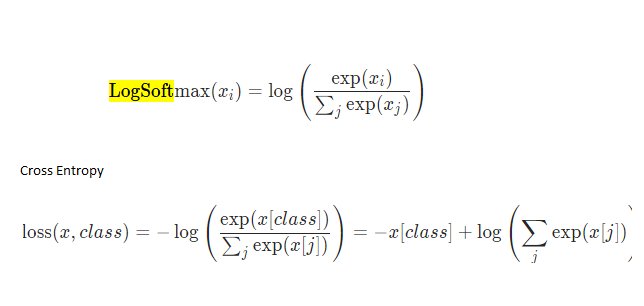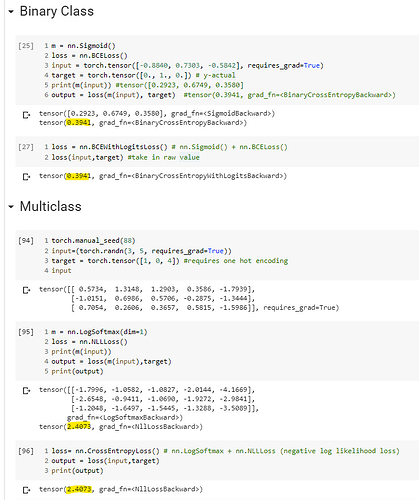Hi @KFrank
thanks for your prompt reply
I think I got it already
But I have some confusion for crossentropy.

I kinda understand regarding the dim=1 which came from the screenshot below.

We need to sum up the denominator for both but why we do not require dim for CrossEntropyLoss

Is my understanding correct when I try so simulate a bad prediction and a good one?
For the target(y_actual),we need to do one hot encoding too.
Also, how can we simulate the NLL?
we need to exp and then multiply by -1
Sidetrack, in DL if we’re saying logits does it mean raw form as in our input in the codes?
after we apply sigmoid or softmax, it will be probability?
Thanks.
